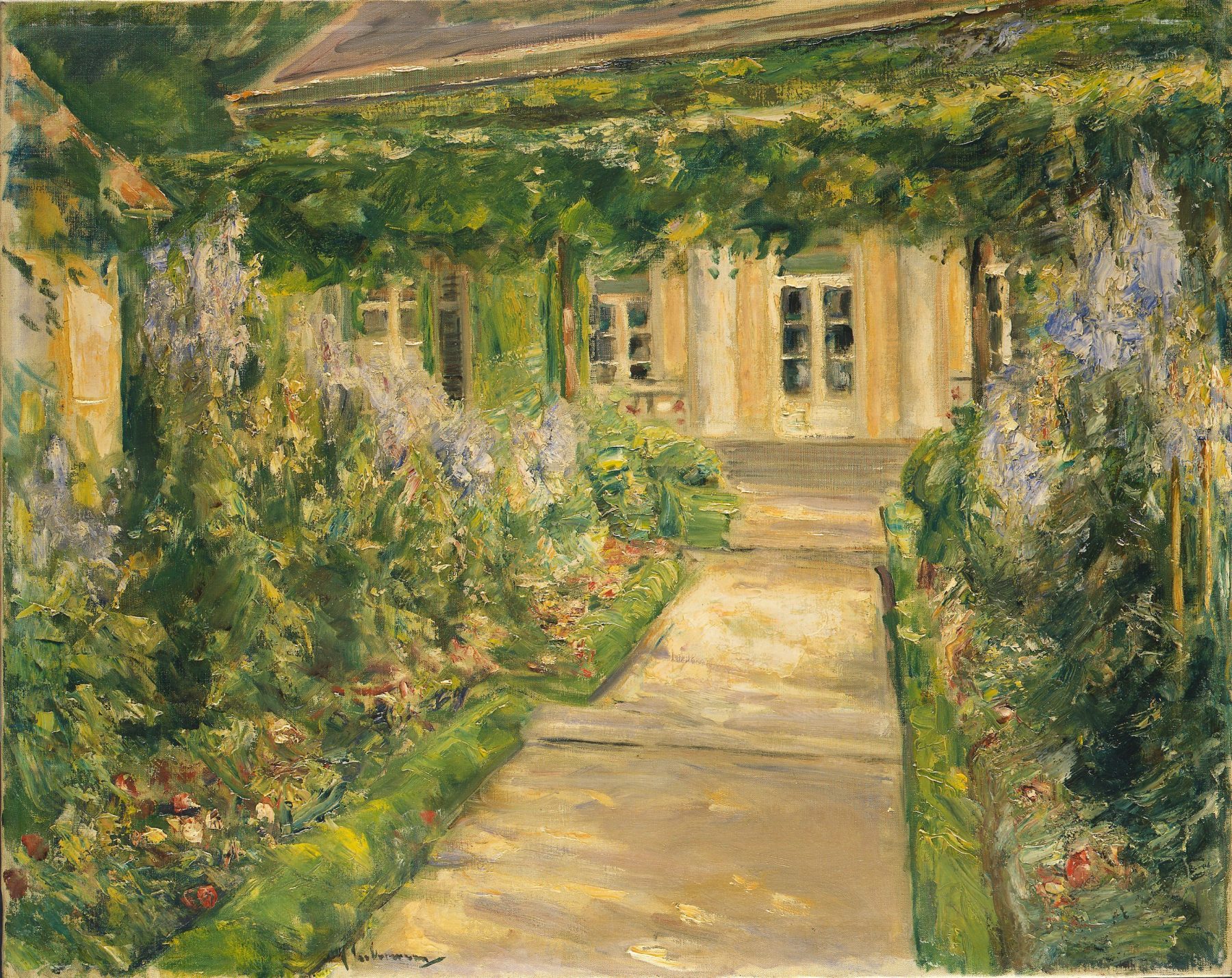
Max Liebermann and his villa at Wannsee
A Walk with the Paintings
Max Liebermann completed over 200 paintings of his summer house and the garden at Wannsee. On the basis of eleven selected works, we tell the story of Max Liebermann and his lakeside home. Follow the motifs and discover Liebermann’s paradise at Wannsee!
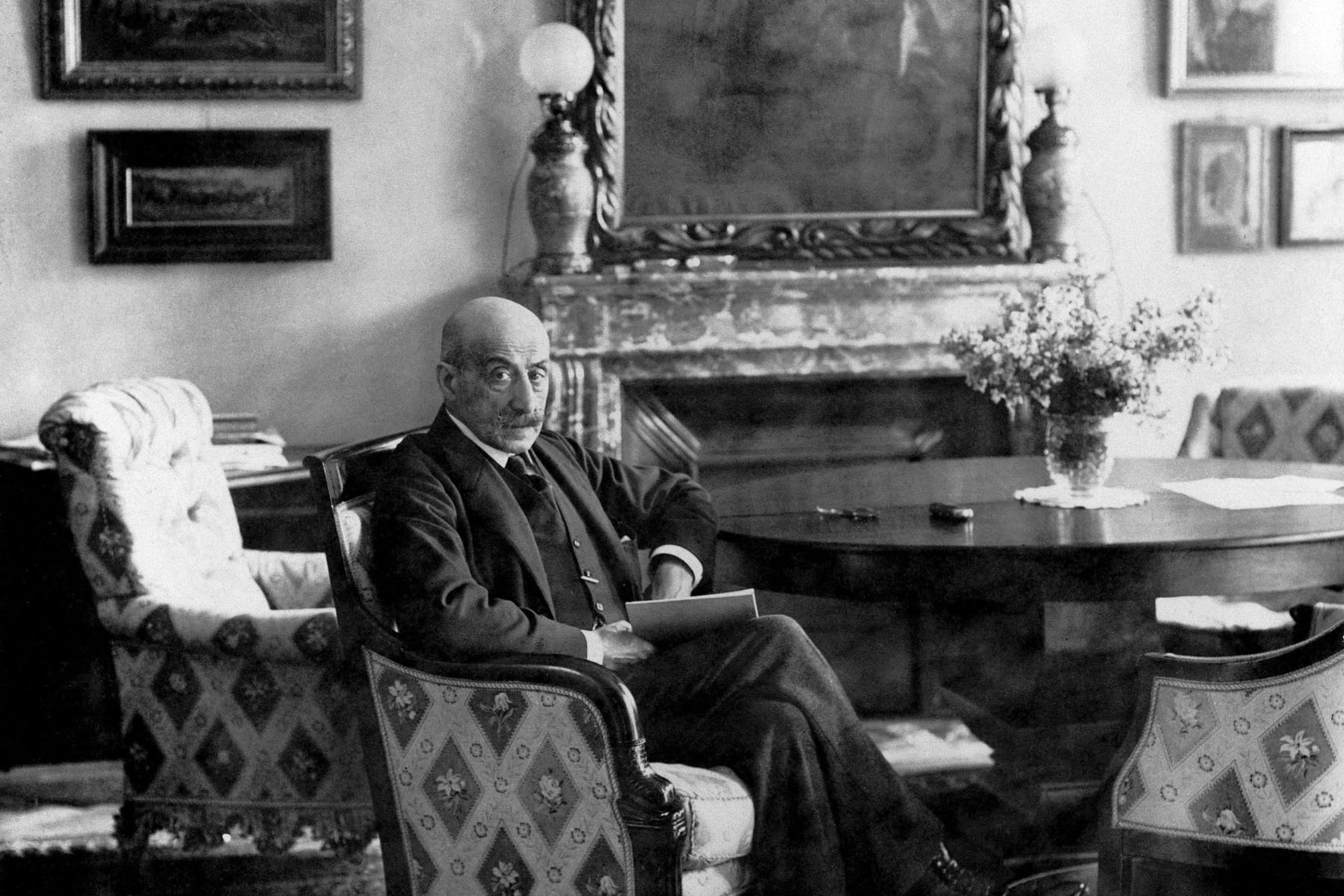
Welcome
Our director, Dr. Lucy Wasensteiner, gives a warm welcome at the beginning of the audio tour.

1. The Villa at Wannsee
The first picture on our tour is depicts the view of the entrance to the Liebermann-villa, with flowering shrubs by the Gardener’s Cottage. Max Liebermann painted it in 1930. We are looking at the façade of the villa in early summer.
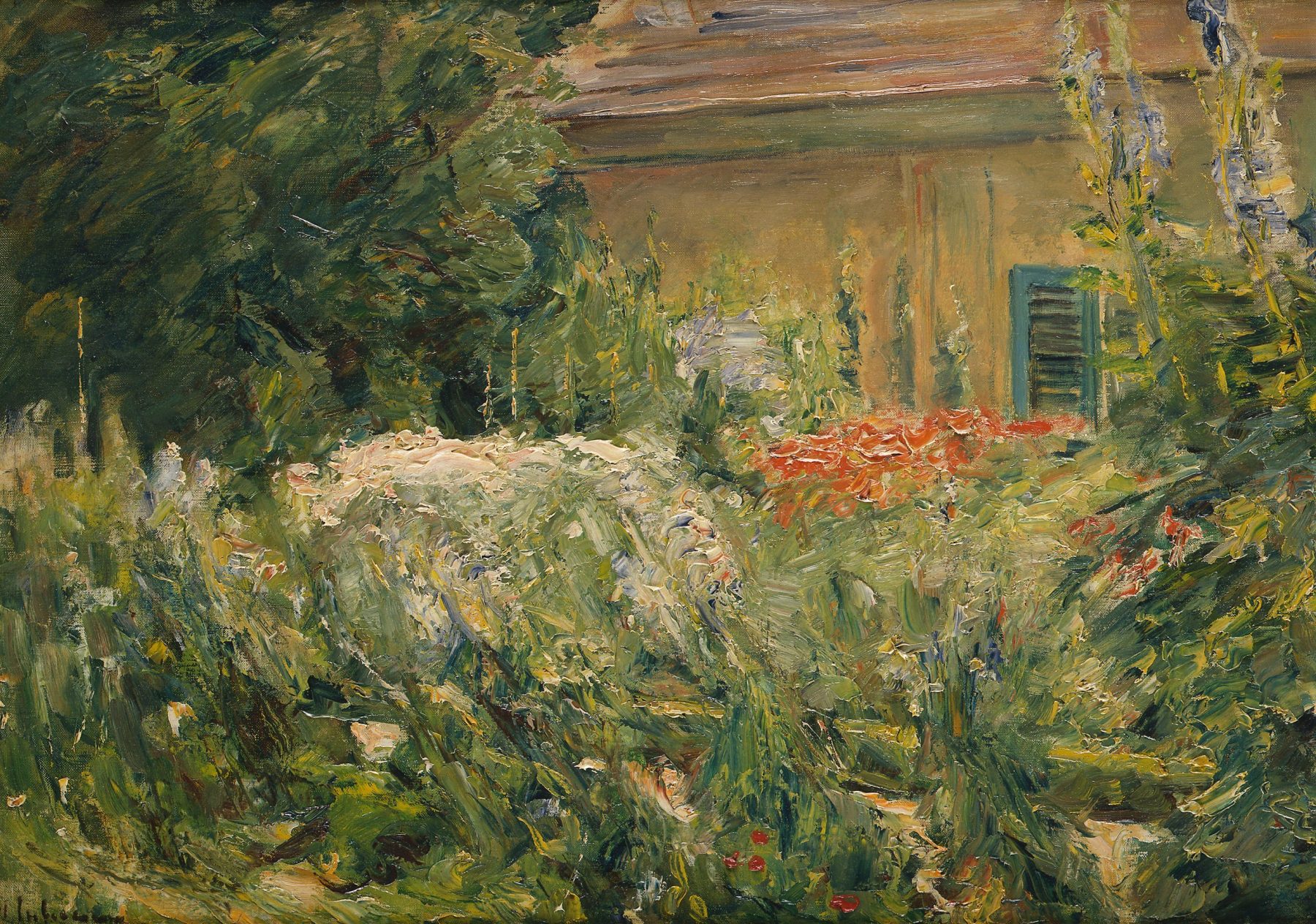
2. Liebermann's Reform Garden
This painting from 1928 depicts Flowering Shrubs by the Gardner’s Cottage. To paint it, the artist took a position on the middle path of the front garden and was looking at the side windows of the gardener’s cottage – towards Colomierstrasse.

3. The Liebermann Family
The villa at the Wannsee became an important place of retreat for the Liebermann family. Here, the artist painted and drew his family members sleeping, reading, and playing.
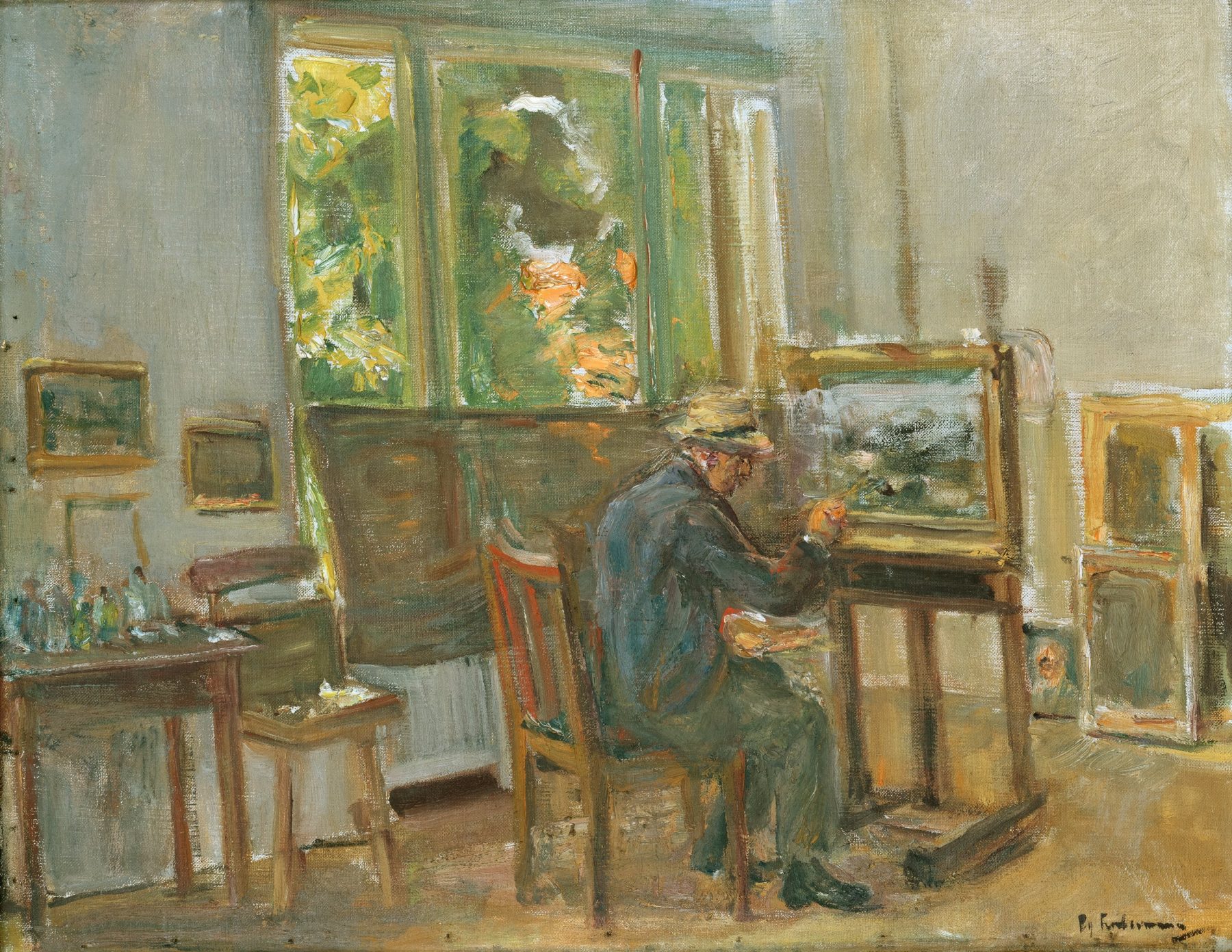
4. The Artist in his Studio
In the painting selected here, we see the artist in his studio at the Wannsee in 1932. The studio was planned into the architecture of the house. It faces north, so as to ensure the least amount of direct sunlight.
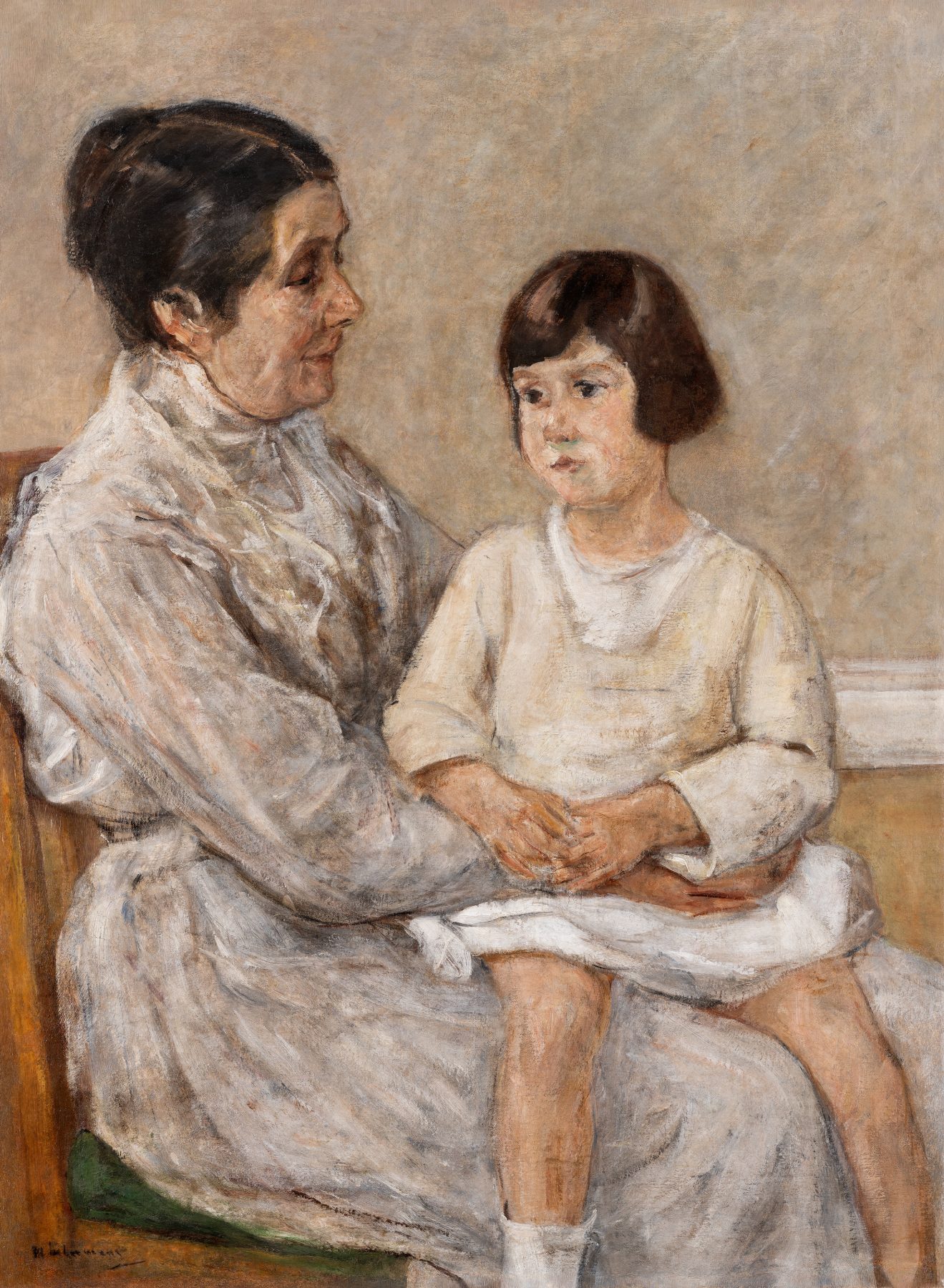
5. The Fate of the Liebermann Family
In this picture, we see Max Liebermann’s wife Martha together with her granddaughter Maria. It was painted in 1922: Martha is sixty-five years old and Maria is five. The white skirting board on the right-hand edge of the picture suggests that Liebermann painted this picture in his studio at Wannsee.
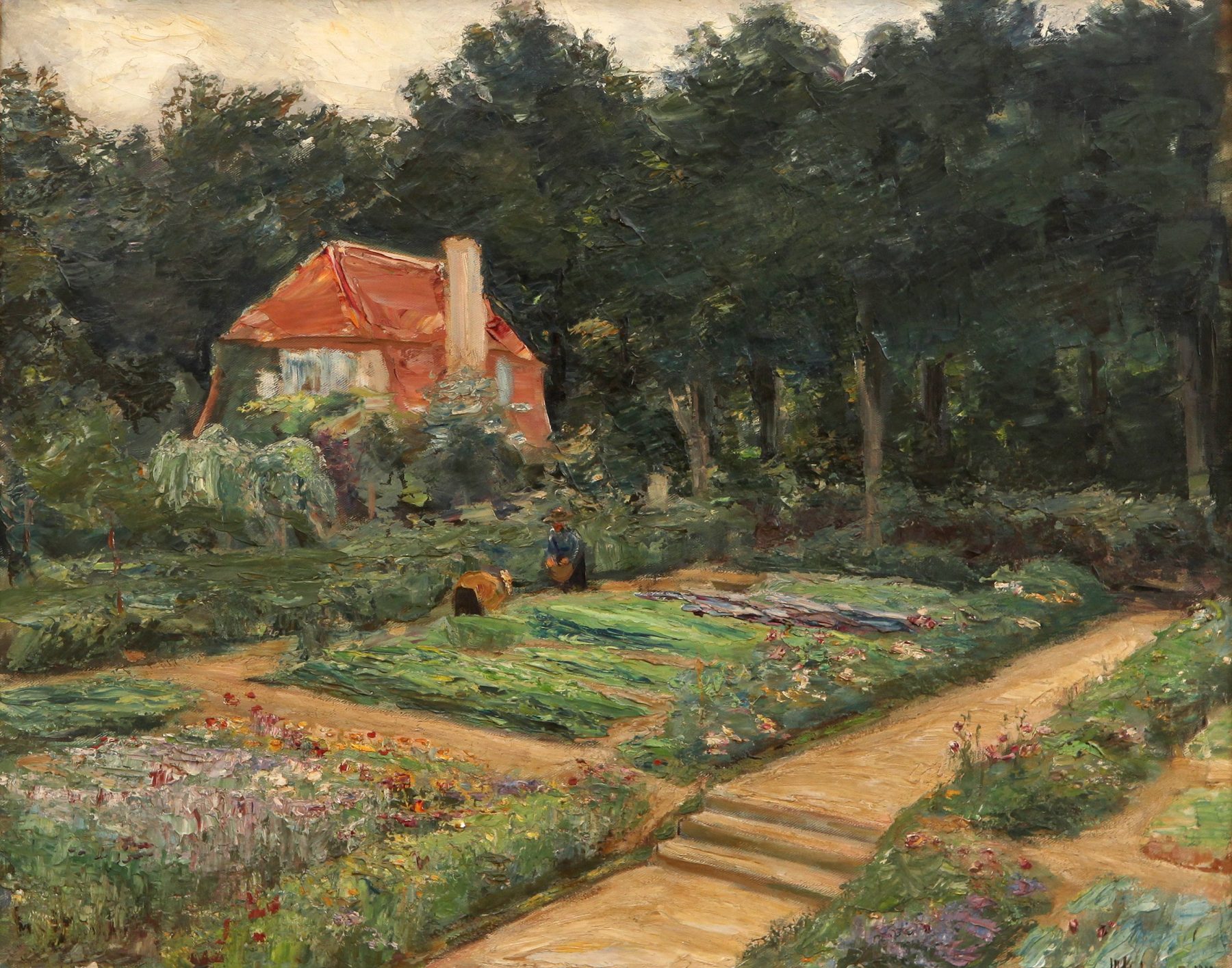
6. The Villa and Garden after 1945
This painting, showing the Artist’s Garden at Wannsee, dates from 1910. The view is directed to the southwest towards the street now called ‘Am Großen Wannsee’. On the left is the garden house of the neighbouring Villa Hamspohn. Johann Hamspohn was a member of the board of the electricity company AEG. Both the Villa Hamspohn and the Liebermann Villa were forcibly sold to the German Reich Postal Service in 1940.
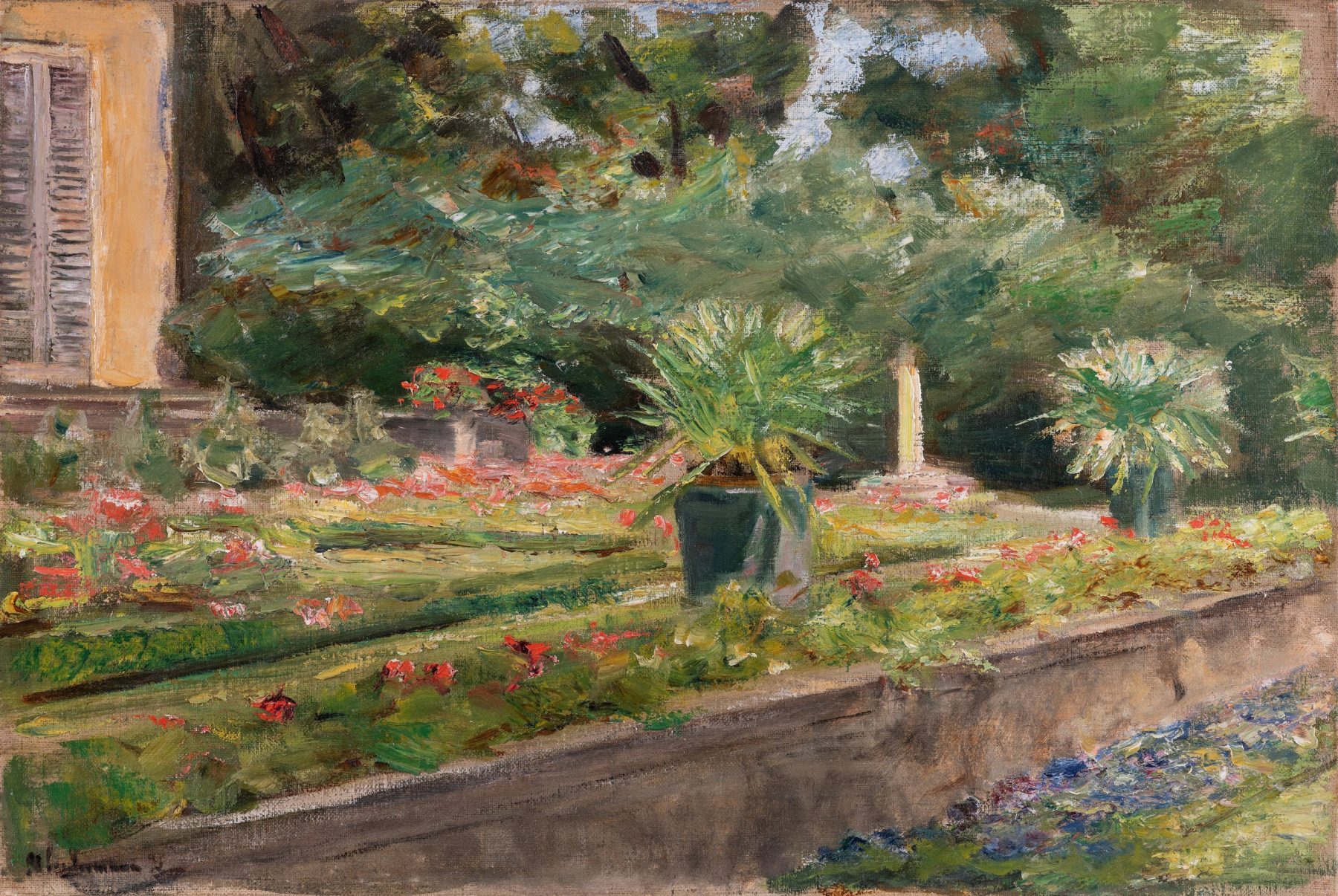
7. The Flower Terrace
This painting shows the flower terrace in the Wannsee garden facing northwest, and dates from 1915. To paint it, Liebermann stood at the upper end of the birch path, looking at the flower terrace in the direction of Colomierstrasse. The red sea of blossoms reveals that the picture was painted in midsummer.
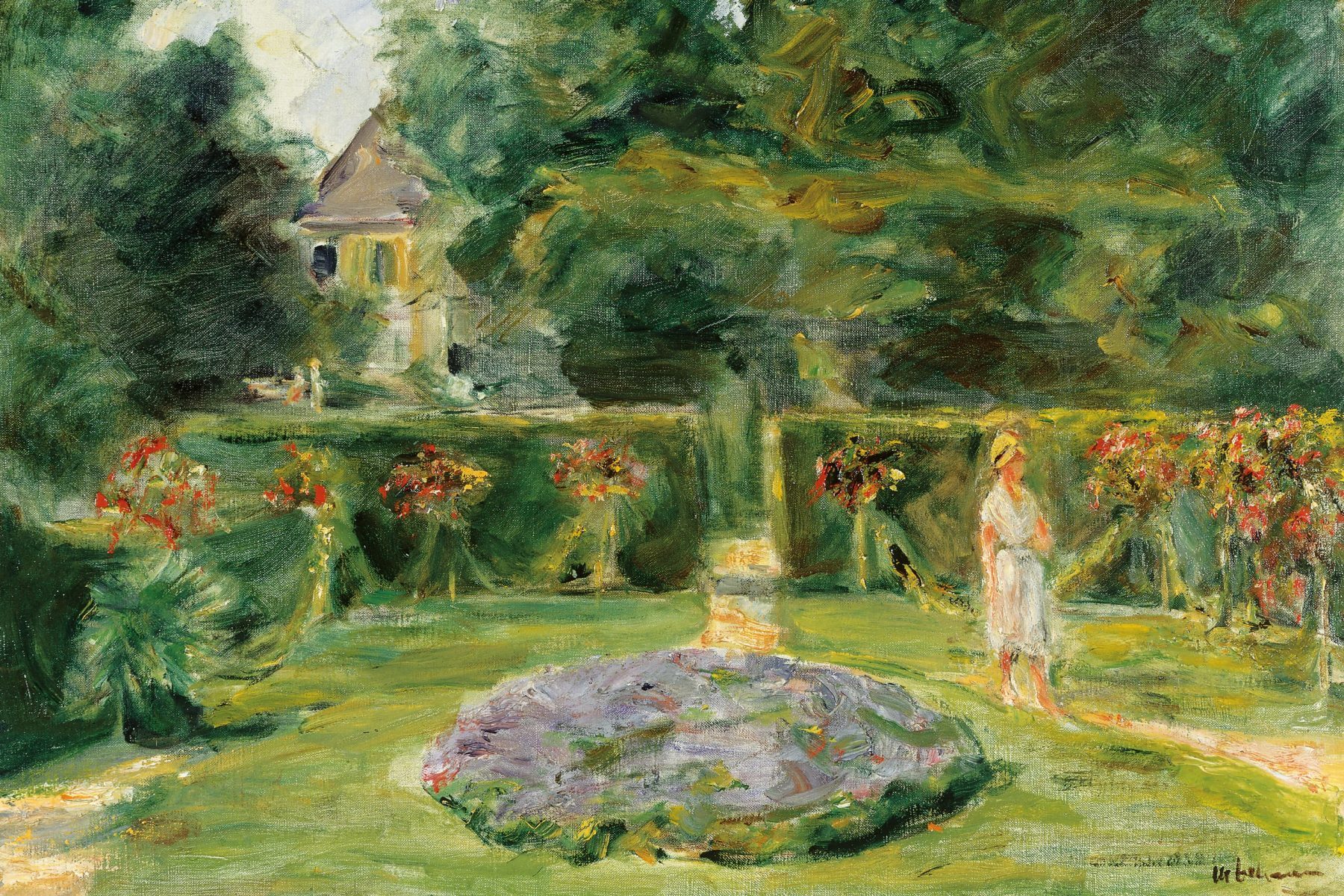
8. The Central Hedge Garden
The three hedge gardens play a central role in the overall composition of the garden. These so-called ‘green rooms’ were intended to arouse curiosity about what was hidden behind them: first a garden with a square of lime trees, then the oval garden, with the rose garden beyond. A straight path leads through the three hedge spaces, leading visitors on with a view of Lake Wannsee.
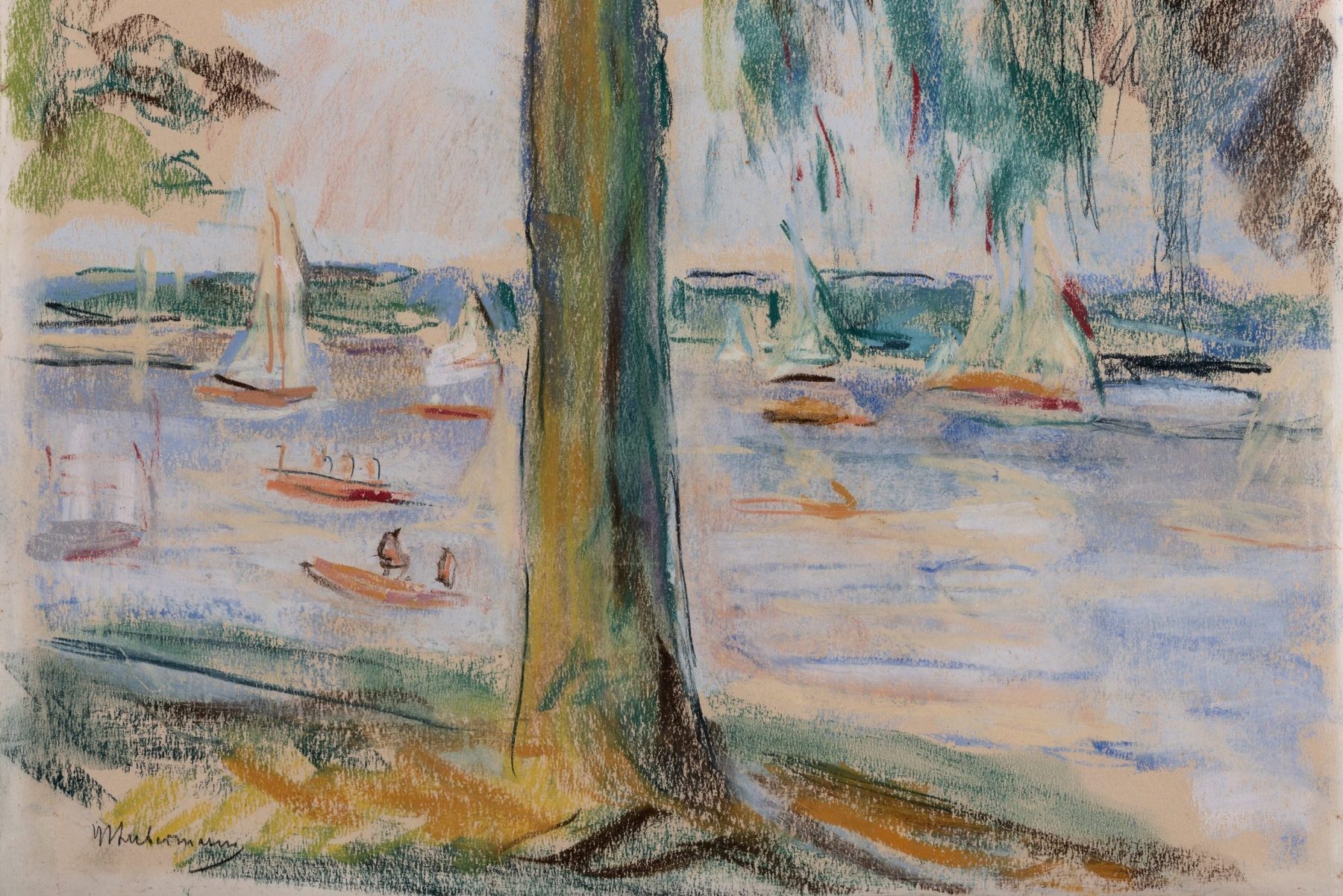
9. Lake Wannsee
Max Liebermann depicted the Lake Wannsee itself surprisingly seldom; he was neither a yachtsman nor interested in water sports. The pastel View of the Wannsee with Boats was created around 1925. It is one of these few depictions: a birch tree stands prominently in the centre, dividing the pastel into two halves. Behind it stretches the Lake. Several boats with hoisted sails float on the blue water.
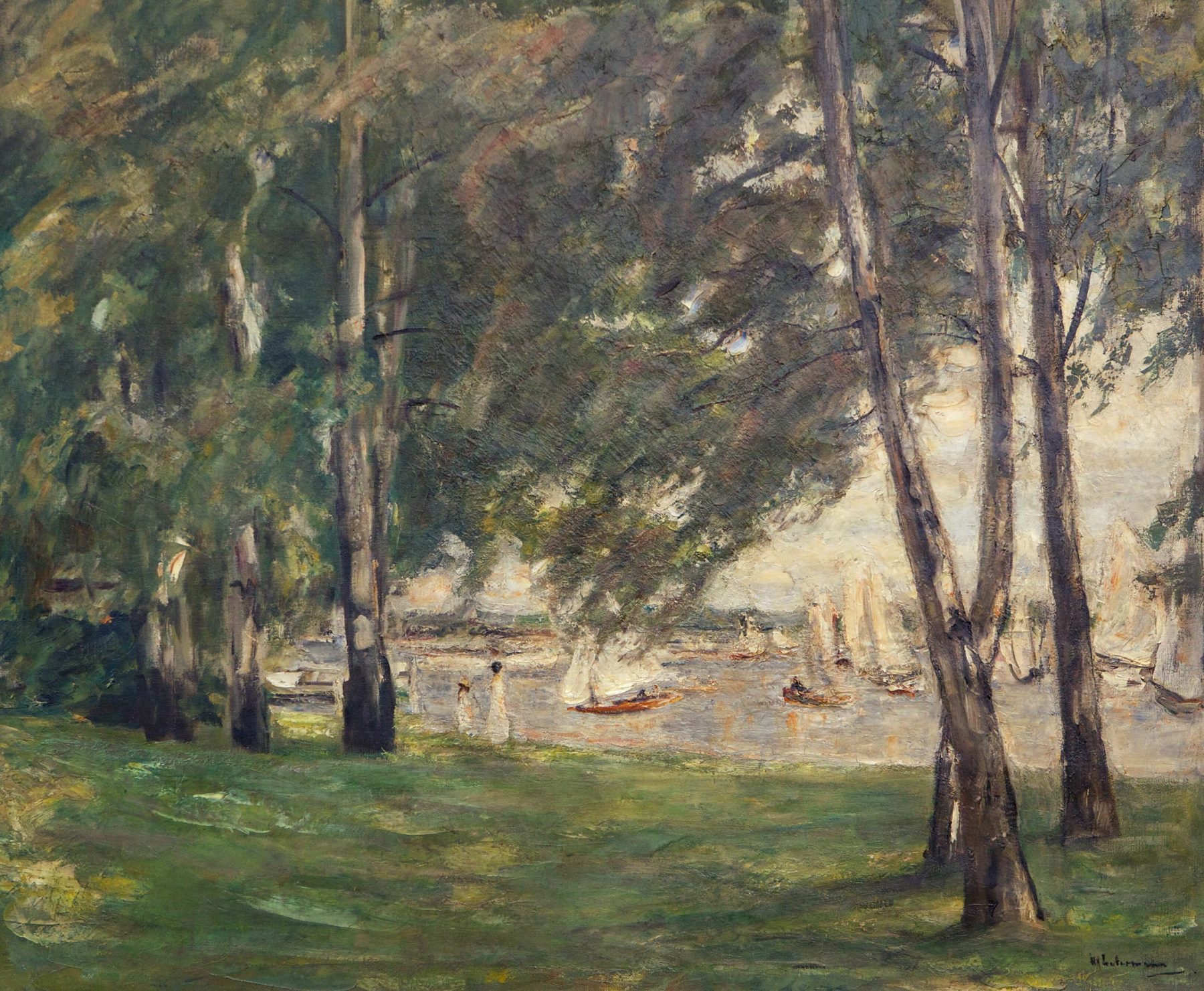
10. Birch Trees on the Shore of Lake Wannsee
When Liebermann built his garden at Wannsee he decided to preserve the existing birch grove on the lake side of the house, despite his desire for straight paths running right and left of the main lawn.
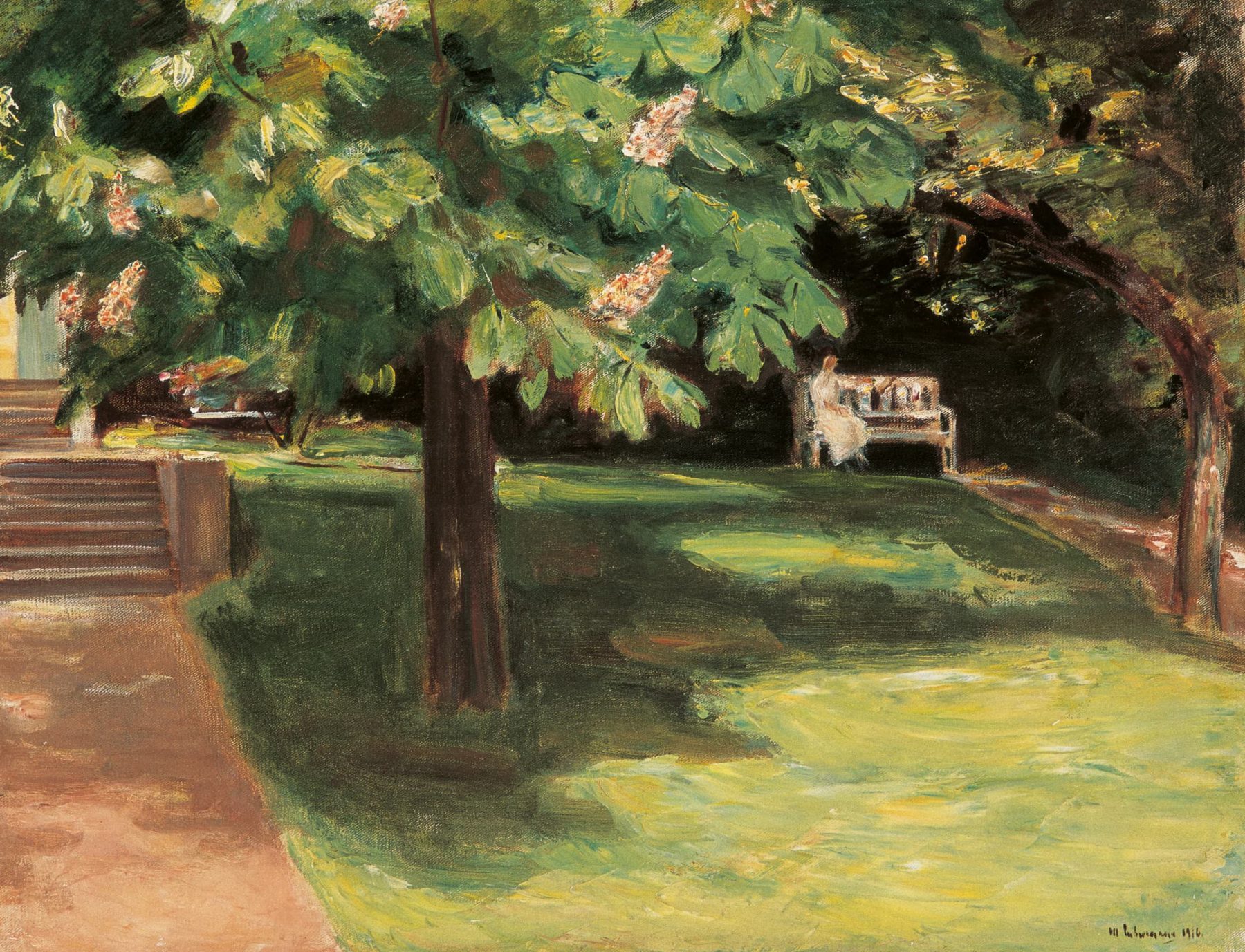
11. The Chestnut Tree and the Max Liebermann Society
This painting, depicting a garden bench under the chestnut tree in the lakeside garden, dates from 1915, and is the last painting on our tour. The chestnut tree depicted in the painting was one of the last remaining original trees from Liebermann’s garden. In 2014, it fell during a storm. The tree was replaced thanks to a successful fundraising campaign among the members of the Max Liebermann Society and the support of the German Foundation for Monument Protection and the Cultural Heritage Tree Fund.
Project
Editing: Viktoria Krieger, Lucy Wasensteiner, Miriam Barnitz, Christina Peter
Production (except ‘Welcome’): soundgarden audioguidance GmbH